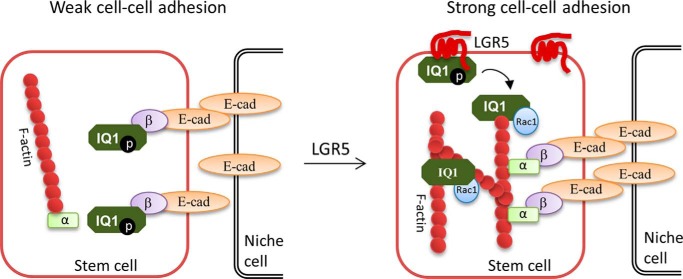Figure 9.
A schematic diagram illustrating the mechanism of LGR5 in the regulation of cell–cell adhesion through the IQGAP1–Rac1 pathway. In the absence of LGR5 (left panel), phosphorylated IQGAP1 (IQ1) is free of Rac1-GTP and can thus bind to β-catenin (β) to disrupt the interaction of β-catenin and α-catenin (α), leading to separation of the E-cadherin (E-cad) adhesion complex from the actin cytoskeleton and weak cell–cell adhesion. In the presence of LGR5 (right panel), the receptor reduces phosphorylation of IQGAP1, which then binds Rac1-GTP, leading to loss of binding to β-catenin as well as enhanced cross-linking of F-actin. This results in the linkage of E-cadherin adhesion complex to the cytoskeleton and stronger cell–cell adhesion.

